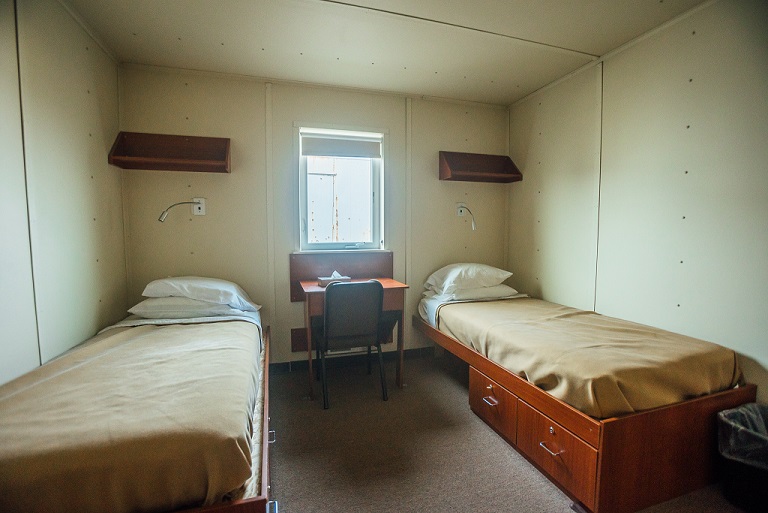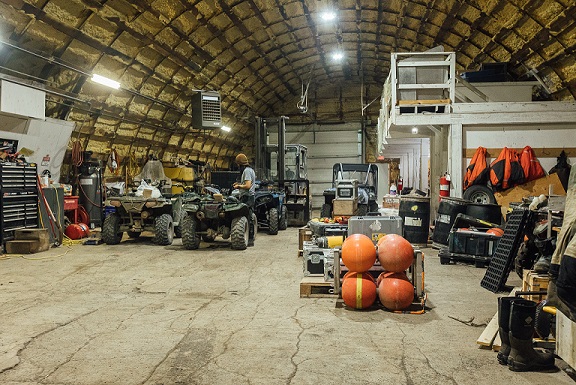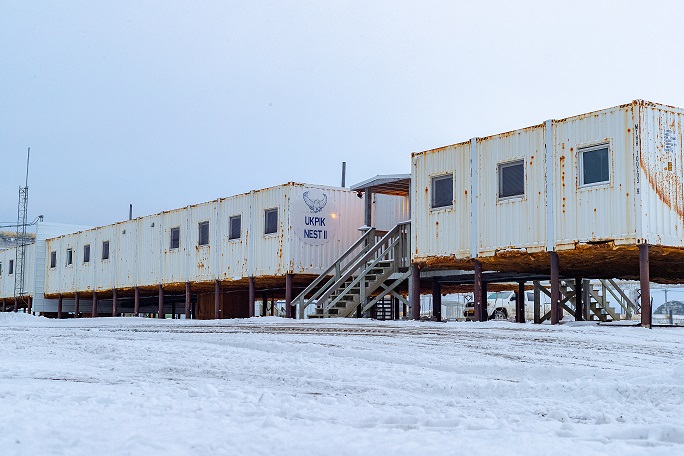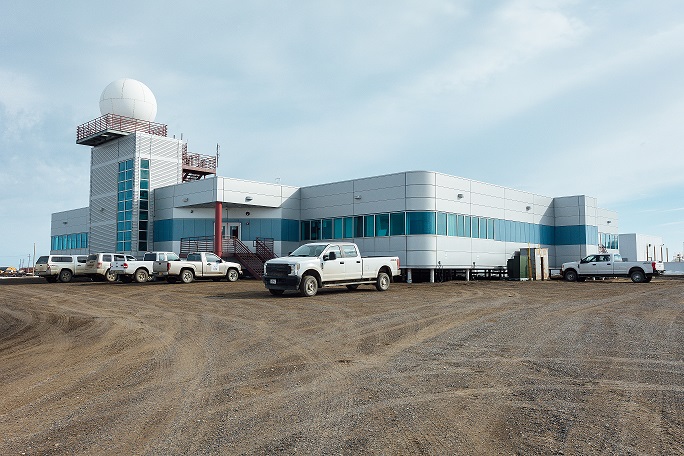
Barrow Arctic Research Center/Barrow Environmental Observatory
Address
UIC Science, LLCNARL Bldg 848/ Barrow Arctic Research Center
P.O. Box 936
Utqiaġvik, AK 99723
USA
Station manager
Terri MitchellContact Station
Phone: 907-632-1240https://uicalaska.com/our-companies/uic-commercial-services/uic-science-llc/
Station Features
Opening year: 1992 Status: OpenFacilities
Station name and owner
The Barrow Arctic Research Center and Barrow Environmental Observatory are managed by UIC Science, a business unit of the Ukpeavik Iñupiat Corporation.
Location
Utqiaġvik (formerly Barrow) (c. 4000 inhabitants) is located at the northern tip of Alaska (USA) on the Arctic Coastal Plain north of the Brooks Range Mountains, at the junction of the Chukchi and Beaufort Seas. The adjacent Barrow Environmental Observatory comprises 30.21 km2 of tundra, lakes, and wetlands reserved for scientific research including long-term environmental monitoring and habitat manipulation experiments.
Climate data
Grey colours are WMO Climate Normals including maximum and minimum values. Blue colours are individual years.
Climate data for the stations where extracted via Copernicus Climate Data Store, from the global gridded reanalysis product:
ERA5 monthly averaged data on single levels from 1940 to present.
Description and source code: Roemer J.K. 2023. https://doi.org/10.5281/zenodo.10214922
Data Source: Hersbach et al. 2023. Copernicus Climate Change Service (C3S) Climate Data Store (CDS), https://doi.org/10.24381/cds.f17050d7
Biodiversity and natural environment
Utqiaġvik (formerly known as Barrow) is characterized by a polar maritime climate but is semi-arid (c. 150 mm annual precipitation). It lies north of the tree-line so the dominant vegetation types are grass, moss, and sedge. Virtually all land in the area is underlain by permafrost within a few meters of the surface. The landscape is characterized by thermokarst lakes and drained lake basins undergoing plant succession. Polar bears and Arctic foxes are found in the region. A large number of transient bird species migrate to the North Slope during the summer including snowy owl, tundra swan, snow bunting, and various species of geese and ducks, including the endangered Steller’s and spectacled eiders. Caribou are frequently observed in the area. During the spring, bowhead whales migrate close to shore, and both gray and beluga whales are often sighted during the summer.
History and facilities
Utqiaġvik (formerly known as Barrow) has a long research history starting with the establishment of an observation station during the First International Polar Year (1882-1883) – hosting near-continuous measurements since then. The Arctic Research Laboratory was established in 1947 and has supported a vast number of atmospheric, biological, oceanic, and terrestrial research activities. Present facilities include modern laboratories, storage, internet access, local accommodations, and cafeteria or self-catering facilities. Vehicle support can also be arranged. Restaurants, supplies, and a grocery store are available in town. Several other programs funded through the US government maintain additional facilities in Utqiaġvik including the National Weather Service and Earth System Research Laboratory (both part of the National Oceanic and Atmospheric Admin.), Atmospheric Radiation Measurement Climate Research Facility (Dept. of Energy), and the US Fish and Wildlife Service (Dept. of Interior). Additionally, the North Slope Borough Department of Wildlife Management is based in Utqiaġvik.
General research and databases
Approximately 50 individual research projects are supported annually. Much of the work at Utqiaġvik involves atmospheric chemistry, ecosystem dynamics, plant/animal phenology studies, and Climate Change monitoring. Many sea ice studies are also based in the area. Limnological and large animal physiology projects are occasionally undertaken.
Station Monitoring
Human dimension
Utqiaġvik has been occupied by humans for at least 1200 years, and a strong Iñupiaq culture is still practiced today including subsistence hunting and whaling activities. English is the predominant language but many residents speak Iñupiaq. The village is the political, logistical, and administrative hub of the 245000 km2 North Slope Borough, and as a result most modern conveniences are available. Summer tourism is an important part of the economy, and nearby resource extraction is becoming more prevalent. Several mobile phone carriers provide reliable service. Off-road access to the tundra (i.e. for hiking) requires a local land use permit. There are several gymnasiums open to the public and Barrow High School provides opportunities for spectator sports. The local Tribal College, IḷisaġvikCollege, provides continuing education and vocational training to students throughout the region.
Access
There is no road access to Utqiaġvik, but the town is serviced by commercial airlines (Alaska Airlines and Wright Air) with daily flights, year-round. Both fixed-wing aircrafts and helicopters can be chartered for research activities from vendors based in Fairbanks (800 km away) or Anchorage (1200 km away) and staged from the Utqiaġvik Airport. Additionally, Northern Air Cargo provides commercial shipping services and the US Postal Service delivers mail and small packages daily. There is no port facility, but resupply barges and boat access are available during the summer. Research facilities are located approximately 5 km north of the village and can be reached via the local road system.










